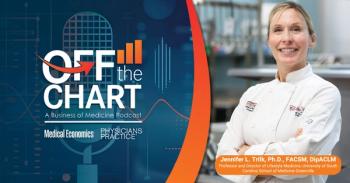
Making Value-Based Payments Work in Primary Care
One medical practice made the transition to embrace value-based care, but not without achieving some obstacles first. Here’s what it learned.
Reorienting a primary care practice toward value-based compensation requires buy-in from everyone who works there, according to Meryl Moss, chief operating officer at Rhode Island-based Coastal Medical, an accountable care organization (ACO) of 24 primary care practices.
Speaking at this year's Medical Group Management Association (MGMA) Annual Conference in San Francisco, Calif., Moss described how Coastal Medical achieved a 100% ACO quality score from CMS for 2015 by meeting all of the agency’s required benchmarks while also reaping more than $24 million in aggregate shared savings over three years.
The key was convincing everyone to take a leap of faith in the new payment model, she said.
In 2009, Coastal Medical organized itself as a patient-centered medical home. But the medical group still found that something was missing.
“We discovered that it wasn’t enough,” said Moss. “We wanted desperately to get away from fee-for-service. Our docs were on a treadmill.”
So in 2012, Coastal Medical began participation in CMS’ shared savings program as an ACO and embraced value-based payments. The transition created tension within the organization as leaders realized as each year was coming to an end that it had not yet met its benchmarks. In a frantic effort to reach these goals, Moss recalls a lot of “screaming and yelling.”
”Nobody was happy,” she said.
Physicians resisted the administration’s efforts at reorganization. So administrators summoned staff and providers to a meeting. They challenged everyone to envision the ideal primary care practice and to suggest ways of achieving that vision.
“We put this all up on the board and they came up with fabulous ideas,” said Moss.
Administrators expected providers to suggest centralizing operations, for example with a call center. But some came to the meeting specifically to oppose that idea. Instead they suggested centralizing clinical programs including pre-visit planning, prior authorization, prescription refills, diabetes management, transitions of care, quality monitoring, and laboratory diagnostics.
So the administration set up a pilot program, asking each practice to designate its practice manager and one physician to participate. It stipulated that if the pilot was successful, the new approach would be rolled out to the entire practice. And it required that office managers report to corporate supervisors instead of to physicians.
The staff complained that there were no clear routes of promotion, so the administration allowed medical assistants to apply for the higher-status jobs being created in the new centralized services.
After working out the kinks in this pilot program, the administration put the new management structure in place throughout the group.
It has achieved striking results:
• About 75% of patients are in shared savings arrangements;
• The average doctor is now seeing about 60 patients, down from 104 in 1999;
• The percentage of patients with very high HbA1c levels decreased by two thirds; and
• Skilled nursing facility and emergency room visits have dropped sharply.
“It’s really hard, but we really believe it’s the right thing to do,” Moss said.
Newsletter
Optimize your practice with the Physicians Practice newsletter, offering management pearls, leadership tips, and business strategies tailored for practice administrators and physicians of any specialty.









